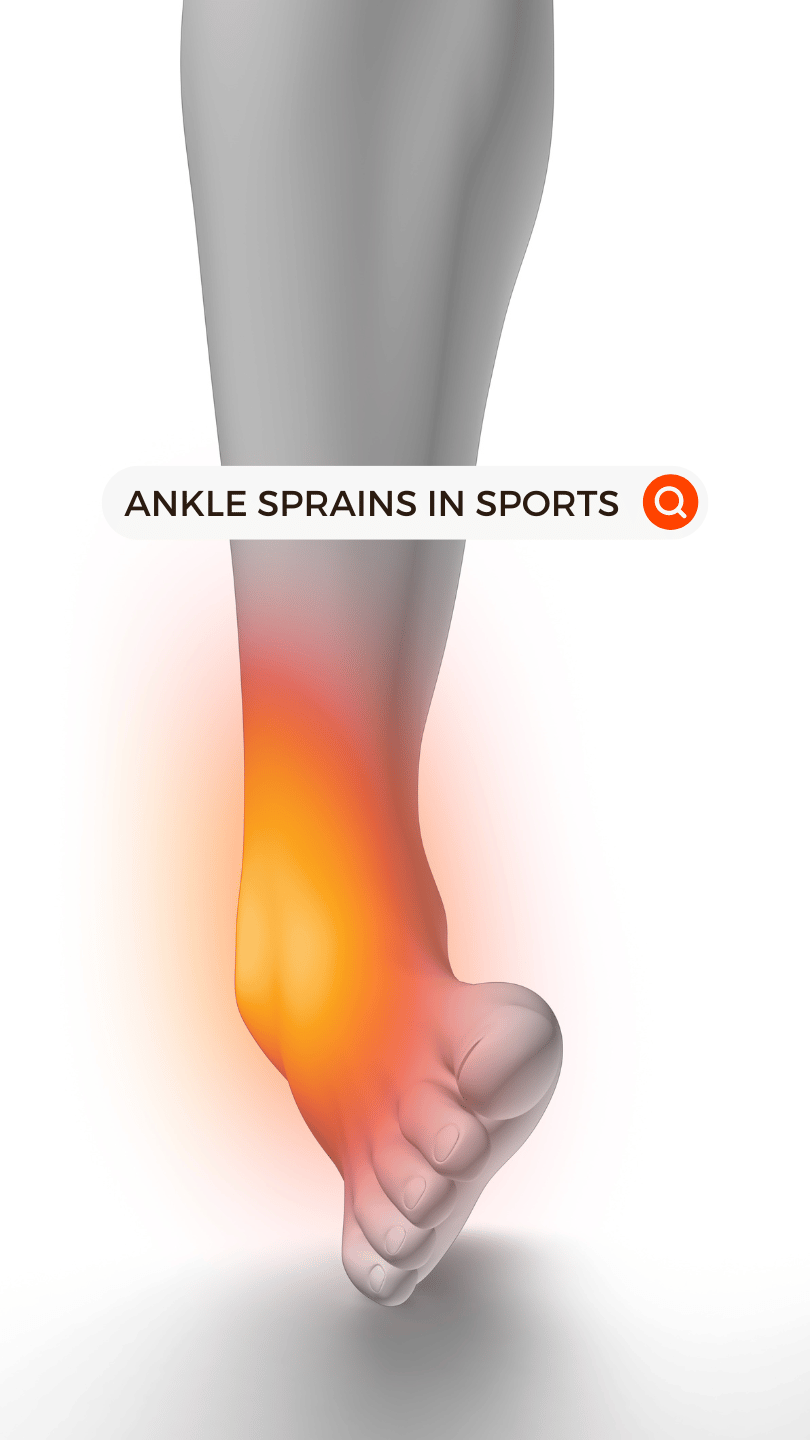Ankle Sprains in Sports
Ankle sprains are a very common sports injury. The majority of ankle sprains that occur in sports are that involving the outside (lateral) ankle ligaments. This post will speak about those lateral ankle sprains exclusively. I will dedicate a separate post for other types of ankle sprains, such as deltoid sprains and high ankle sprains.
Since ankle sprains are so common, they can occur during organized sport activity or during normal kid activities. It is important to understand about ankle sprains before trying to understand how to treat ankle sprains.
Mechanism of lateral ankle sprains
Lateral ankle sprains occur when the foot turns in toward the opposite ankle, otherwise known as inversion. Most people have had some type of inversion incident in their life when they step off a curb or when they step on a rock and their ankle “gives out.”
An inversion type injury is more common than an eversion injury, or when the foot turns out. Inversion injuries can happen when a basketball player comes down from a rebound and lands on the side of their foot. Or when a volleyball player changes direction quickly and pushed off and the ankle gives out. Or when a soccer player steps on an opponent’s foot and rolls the ankle.
When the foot turns in, the ligaments on the outside of the ankle are stretched and injured. The degree of damage is based on the severity of the injury, position of the foot at the time of the injury, and the integrity of the ligaments from a previous injury.
Inversion of the ankle is the most common mechanism of ankle sprains in sports.
Signs and symptoms of lateral ankle sprains
Immediately after injury, the lateral ankle will be painful, have swelling and possibly bruising. The swelling and bruising can easily move into the foot or toes as gravity pulls it into those areas, but that doesn’t indicate further injury. The bruising and swelling can be immediate or take a few minutes to a few hours to show up.
First time and more mild injuries will be more painful and can have more swelling and bruising than subsequent injuries.
The pain will range from mild to severe based on the athlete and the severity of injury to the ligaments. Not being able to walk on a sprained ankle does not mean there is a fracture. Sometimes the pain will be so severe after the injury that an athlete will not be able to walk on it. That is totally normal and not an alarm that there may be something worse going on.
Pain will be mostly centered around the outside of the ankle at the tip of the fibula, the bone that sticks out on the outside of the ankle.
Some athletes will complain that they heard a “pop” when they suffered the injury. Typically, that is nonspecific and isn’t necessarily indicative of severity of injury or telling if it is an ankle sprain or ankle fracture.
Swelling and bruising in the lateral ankle. Notice the bruising and swelling is spreading due to gravity.
Grading lateral ankle sprains
Ankle sprains are graded I-III based on level of injury and instability of the ligaments. I want to just explain to you the differences between them because it is important to understand for treatment. The grading system is only important to understand, we won’t be talking about how to test the ankle ligaments to determine grading.
Grade I lateral ankle sprains
A stretching of the the most anterior ligament. The ankle is still stable and there may be some swelling and pain, bruising is unlikely.
Grade II lateral ankle sprains
A partial tearing of the anterior and central ligaments. The ankle will turn in more than the opposite side if they were compared, but the ligaments are still intact.
Grade III lateral ankle sprains
Either a complete tearing of the anterior and central ligaments, or involvement of all three lateral ankle ligaments. Grade III ankle sprains are unstable. These are the most concerning that they are treated appropriately to avoid chronic ankle instability down the road.
Be sure to read more about the treatment of lateral ankle sprains and rehabbing and returning to sports after suffering an ankle sprain.
What questions do you have so far? Leave your questions below concerning ankle sprains in sports.
Disclaimer: This post is for informational and educational purposes only, does not constitute medical advice, and does not establish any patient relationship with me. I’m not liable or responsible for any damages related to your use of this information. Information given is a generality of athletic injuries and treatments and is not meant to replace traditional medical advice. Please consult a physician for proper care.



